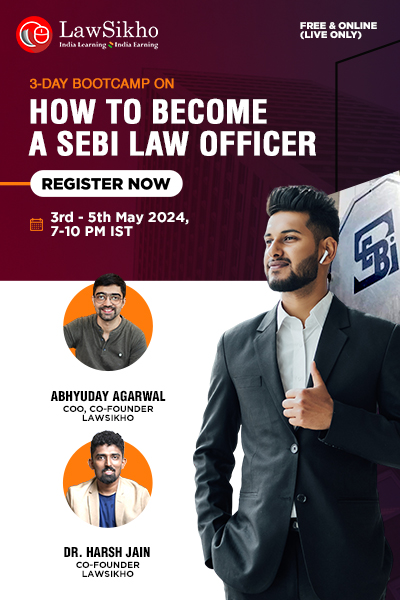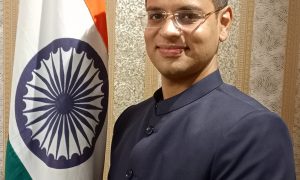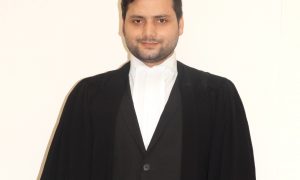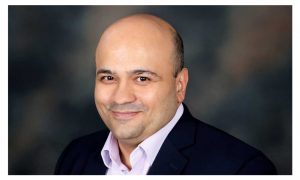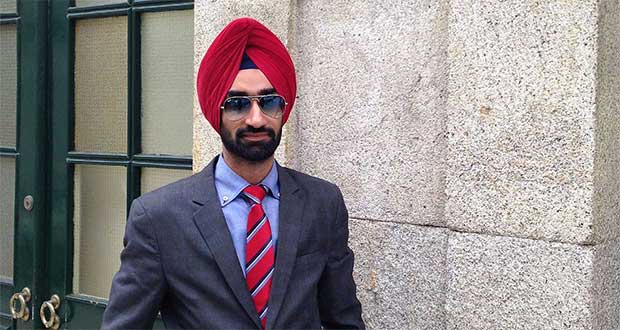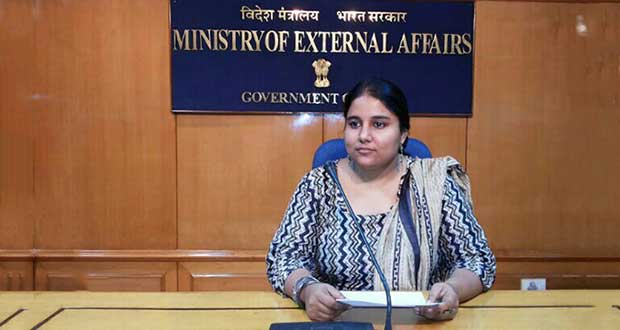This Interview has been published by Pragya Chandni and The SuperLawyer Team

Can you share your journey into the field of law, particularly focusing on what drew you to specialize in intellectual property law?
My interest in intellectual property developed in my third year when we were first taught ‘Trademark and Copyright law’. I found the subject to be interesting and relatable, as it dealt with brands and ideas that I would come across and use in my day to day life. Soon I found myself looking for the TM or ® symbol on top of brands on hoardings or while using products and wondering whether use of a song in a TV series or a similar tune or idea was copyright protected.
In law school, besides focussing on IP related projects for my curriculum, I also participated in an IP moot.
To explore this interest further and to understand what a career in IP could entail, I went on to do a few IP internships at Singh and Singh and K&S Partners. At both these places I worked on ongoing cases across various subject areas including trademarks, copyright and patents, which further helped me understand various legal concepts and their practical application.
With all this, early on, I realized that this was a subject that I enjoyed and found interesting and that I wanted to make a career in it.
With over a decade of experience, you’ve likely encountered a diverse array of cases in trademarks, copyrights, and geographical indications. Could you tell us about a particularly challenging case you’ve handled and how you navigated it?
My work primarily revolves around a diverse array of brands and their protection. It is difficult to talk about a single case as each case comes with its own unique set of facts and challenges, which require you to devise customized strategies that may not work in other scenarios.
Where it often gets tricky for international brand owners is when rogue Indian parties adopt, apply and use brands that are popular internationally but are not in use in India. India being a common law country, use of a brand precedes its registration with the trademark registration authorities. For example, brands such as Macy’s or Hulu or Skims, are not in commercial use in India but are known to a large portion of the Indian consumer base due to exposure to western movies, TV series and social media. Under Indian law, if an Indian party were to use and apply for such brands in India before the actual brand owners, they could potentially block or raise issues for the launch of the genuine brands in India in future. Such a scenario is problematic as companies invest thousands of dollars to launch a brand in India and stand to potentially get injuncted from using their own brands.
To navigate such issues, brand owners have to inter alia submit documentation to show that their brand was well known in India on the date of adoption by the Indian party. This is often difficult as the burden of proof is fairly high. Also not all companies maintain sales or publicity records going back several years. As a trademark lawyer, I have worked with several clients to assess their options in the face of risk of being sued, and helped find efficient, bespoke, and commercially viable solutions in such cases.
A niche subject area that I have had the opportunity to work on is that of geographical indications. There are not too many firms in India that have expertise in the field as the subject has various angles and legal intricacies that are still widely unexplored and for which there is no settled legal position. However, my mentors at K&S Partners have been extensively involved in the registration and protection of numerous Indian and foreign GIs, both at a legal and at a policy level. Due to this, I have had the rare opportunity to closely work with several such Indian and foreign GI right holders and stakeholders and advise on unique issues that have far reaching domestic and international consequences.
As someone deeply involved in managing IP portfolios and brand strategies, what strategies have you found most effective in protecting your clients’ intellectual property rights, especially in such a competitive market?
When devising an appropriate strategy for a client, few basics are key- such as the business they are in, how aggressively they wish to promote, how litigious they are and most importantly, what their existing rights are. As mentioned before, maintaining, and producing relevant documentation showing commercial use in India is imperative. Such documentation is vital to establish the rights of parties.
Secondly, when a new brand is being launched in the market, it may also be relevant to conduct a thorough check of the Trademarks Register and the market to ensure that there are no existing brands that are similar or identical. This simple pre-emptive measure helps clients identify risks in advance and prepare for a potential action. Similarly, we also advise clients on the strength of a brand from a protection and enforcement point of view. For instance, if one were to use ‘apple’ for a food item, it would be considered non-distinctive and/ or descriptive. However, ‘apple’ for electronics, is a distinctive brand.
Thirdly, it is important for clients to conduct market surveys and conduct other checks to identify copycats/ infringers and take appropriate action against them. If action is not taken and infringers are allowed to co-exist, it may eventually lead to dilution of the brand making it common to the trade. This is also equally applicable to geographical indications. In India, we come across numerous names that have been accorded GI status. However, post registration, there is little to no enforcement or quality control of the products bearing the GI tag. In due course, this will lead to the GI losing to have any commercial significance and it may end up becoming generic.
Your work spans across various industries, from FMCG to pharmaceuticals. How do you adapt your legal strategies to suit the unique needs and challenges of each industry?
An understanding of the industry in question is important while devising a legal strategy. Depending on the industry and the needs of the client, we look at how long a particular brand will be in use in the market and what is the level of investment that the client is making for it. This gives an idea of the kind of risk the client may be willing to assume. Some clients are very keen on adopting a specific brand and are willing to take the risk that may come with its launch and use. On the contrary, sometimes they give us multiple options and seek an assessment of which would be the most risk free. It depends on how risk averse or aggressive the client is.
When it comes to industry, FMCG and F&B clients usually launch sub-brands for a short period of time that may be for a promotional event during the festive season. In such cases, separate assessments for use and registration of a brand may be given, also keeping in mind the brand placement and packaging. Automobile or clothing companies, on the other hand, usually have one main brand and their primary intent is to enforce their rights in the brand and protect it. While they may adopt a few ancillary brands sometimes, these instances are comparatively fewer. For pharma brands, clients mostly derive extensions from the name of the main salt in the product, which may be difficult to protect in some cases. This is because no monopoly can be claimed in the name of the salt.
Given the constantly evolving nature of intellectual property law, how do you stay updated with the latest developments and trends in the field?
From a registration point of view, I keep myself updated with the practices of the Trademarks Office to understand the objections being raised by them and the timelines being followed by them. The kind of stands being taken in hearings and the orders being passed are kept in mind. One also needs to keep track of the notifications and public notices that are issued by them.
From a strategy point of view, I go through the articles published on SpicyIP, like almost every IP lawyer! When I find an article particularly interesting or believe that it may be applicable to our day to day working, I go through the case law to properly understand the reasoning being adopted by the Courts. I have recently started writing about such cases, which requires a further deep dive into the legal proposition. Such research is also done while providing opinions to clients to ensure that the advice being given is up to date and accurate.
Lastly, our team members try to meet on a weekly basis to discuss the relevant cases of a particular week and to bounce off ideas and consider their applicability in our matters.
Managing projects with tight deadlines and high volumes requires a great deal of efficiency. Can you share some insights into your approach to multitasking and maintaining quality in deliverables under pressure?
First and foremost, as IP work is deadline centric, maintaining deadlines is crucial. In the office, we have an ERP system which sends a reminder a few days before and on the day a matter is due. In addition to that, I also maintain deadlines and reminders on Outlook, for matters which I or any of my associates are delivering. This not only ensures that no matter is missed out, but also helps me make sure that incoming and outgoing matters are attended to timely.
It also helps to maintain a priority-based to-do list. The most time sensitive and urgent matters get first preference and so on and so forth. Also being in a managerial and supervisory capacity, I rely on associates and support staff to make sure that matters are smoothly and timely attended to. Efficient allocation of resources, by identifying the strengths of each team member, assessing the complexity and urgency of the matter at hand, is key. It is imperative to have open communication channels with the team so that a collaborative approach may be taken, without micromanagement. Setting realistic deadlines after discussion with the team and being clear with the client regarding their expectations and requirements goes a long way. For complex matters, I usually first discuss the strategy with the team, and then review the final advice/ draft being sent to the client, to ensure that all relevant points have been covered. For other matters, a review may not be needed after a discussion, unless of course a team member wants their draft to be looked at by a second set of eyes. I also discuss legal propositions and opinions with my peers and mentors to get their ideas and to provide a well rounded opinion which considers all possible angles.
Most importantly, one needs to take ownership and responsibility of their work and strive to put in their best efforts to get the best work product.
Finally, what advice would you offer to law graduates aspiring to specialize in intellectual property law, based on your extensive experience in the field?
First and foremost, read! The more you read, the better your understanding will be. IP law is not just limited to conventional ideas of trademarks and copyright. Given the prevalence of social media and extensive amounts of content being circulated, there are various interesting and unique propositions that come up that have not been explored in the past. The challenges of IP in the metaverse is one such example. Because of the Make in India campaign of the government, we are seeing a huge surge in IP protection, including in related fields such as data protection and media law.
Another suggestion would be to intern with a few IP law firms or with IP teams of full-service law firms. There is a vast difference between theoretically learning the law in law school and applying it in cases in practice. An internship is the best way for law students to get exposure to the practical aspects of IP law.
Get in touch with Anooja Padhee-

